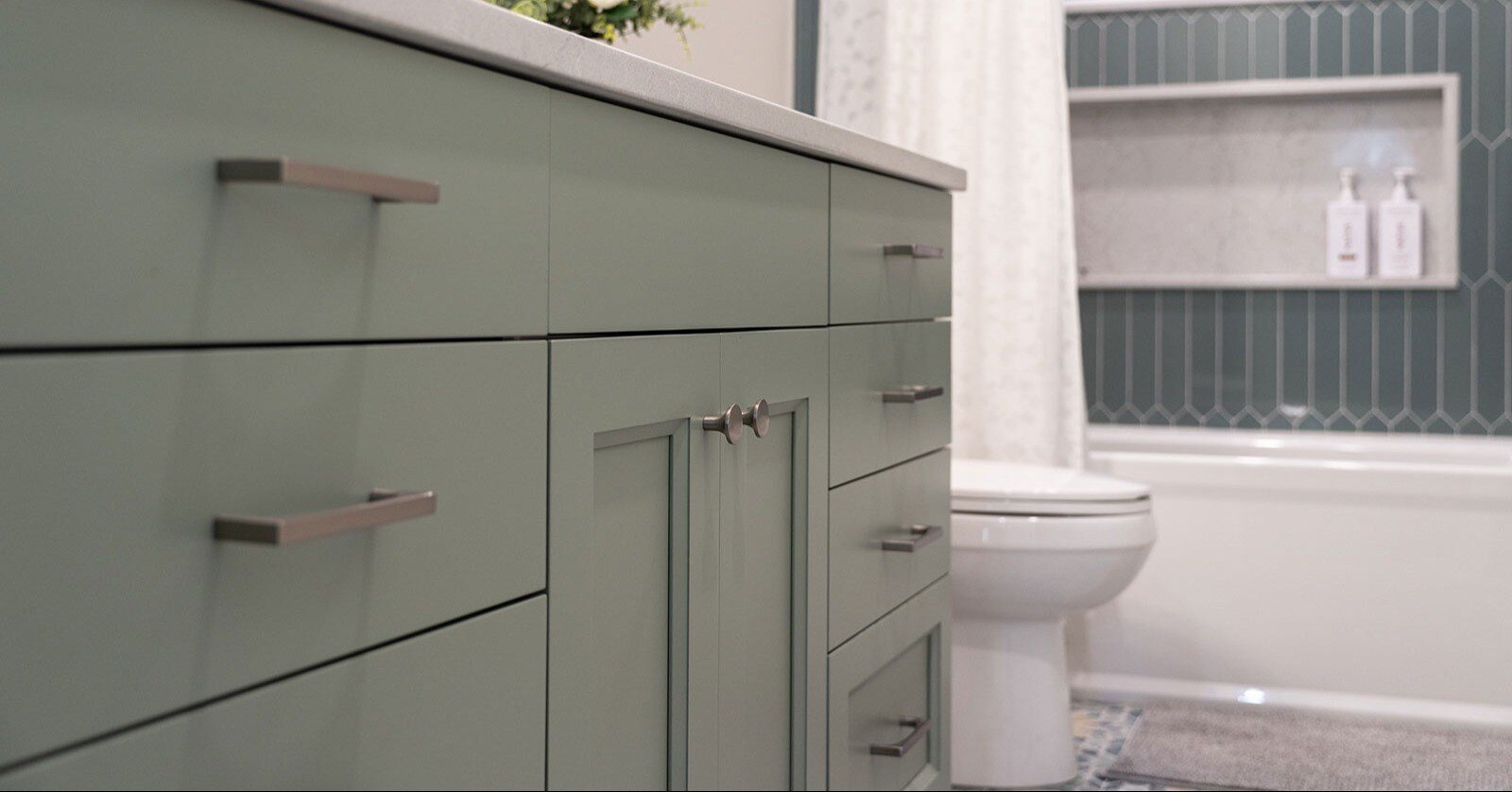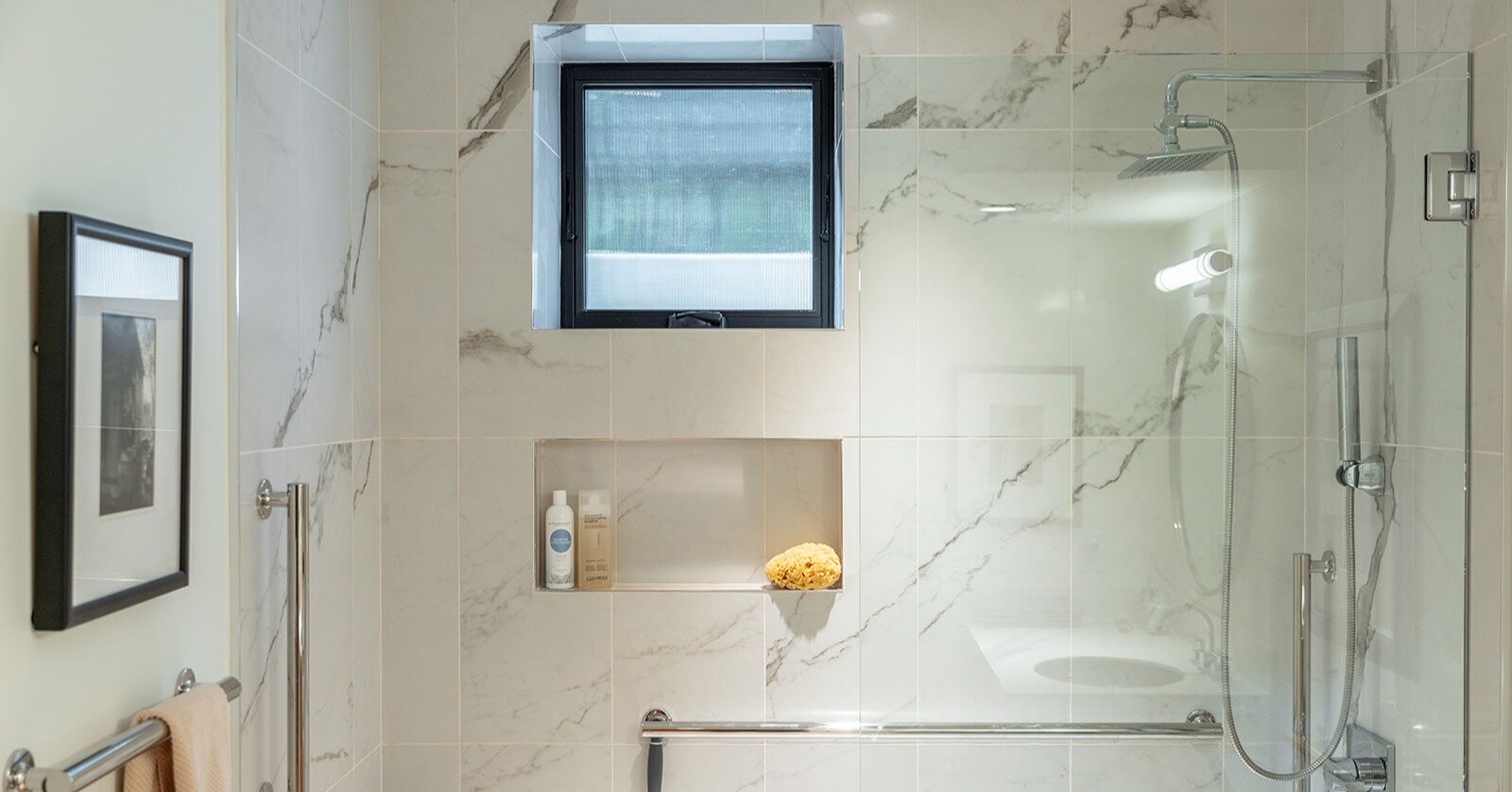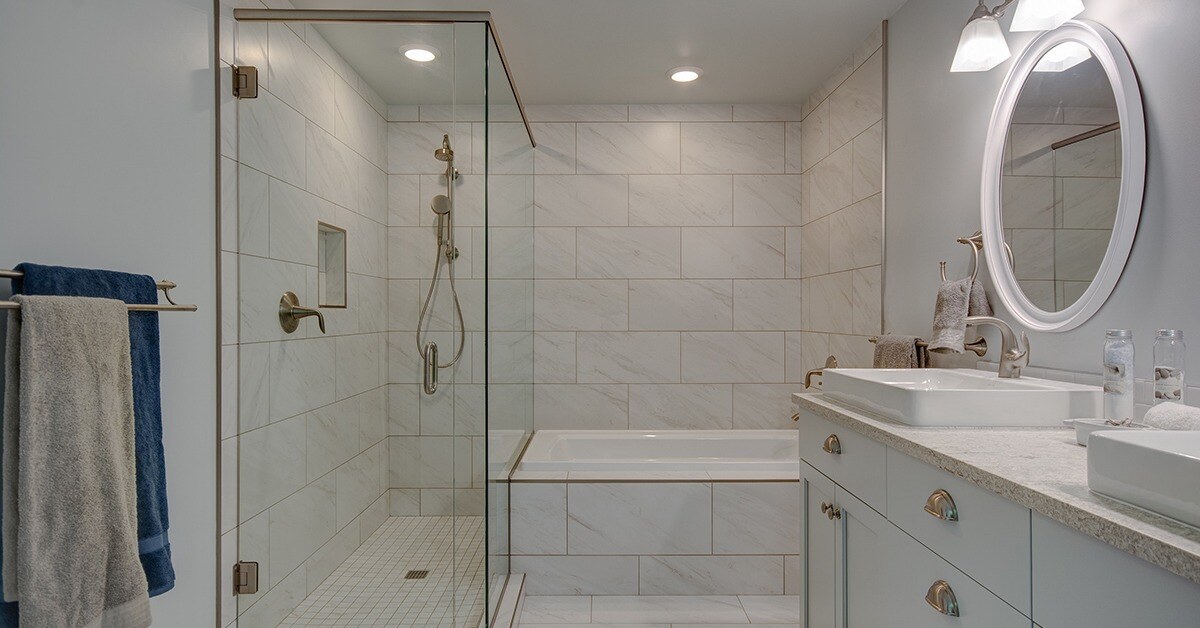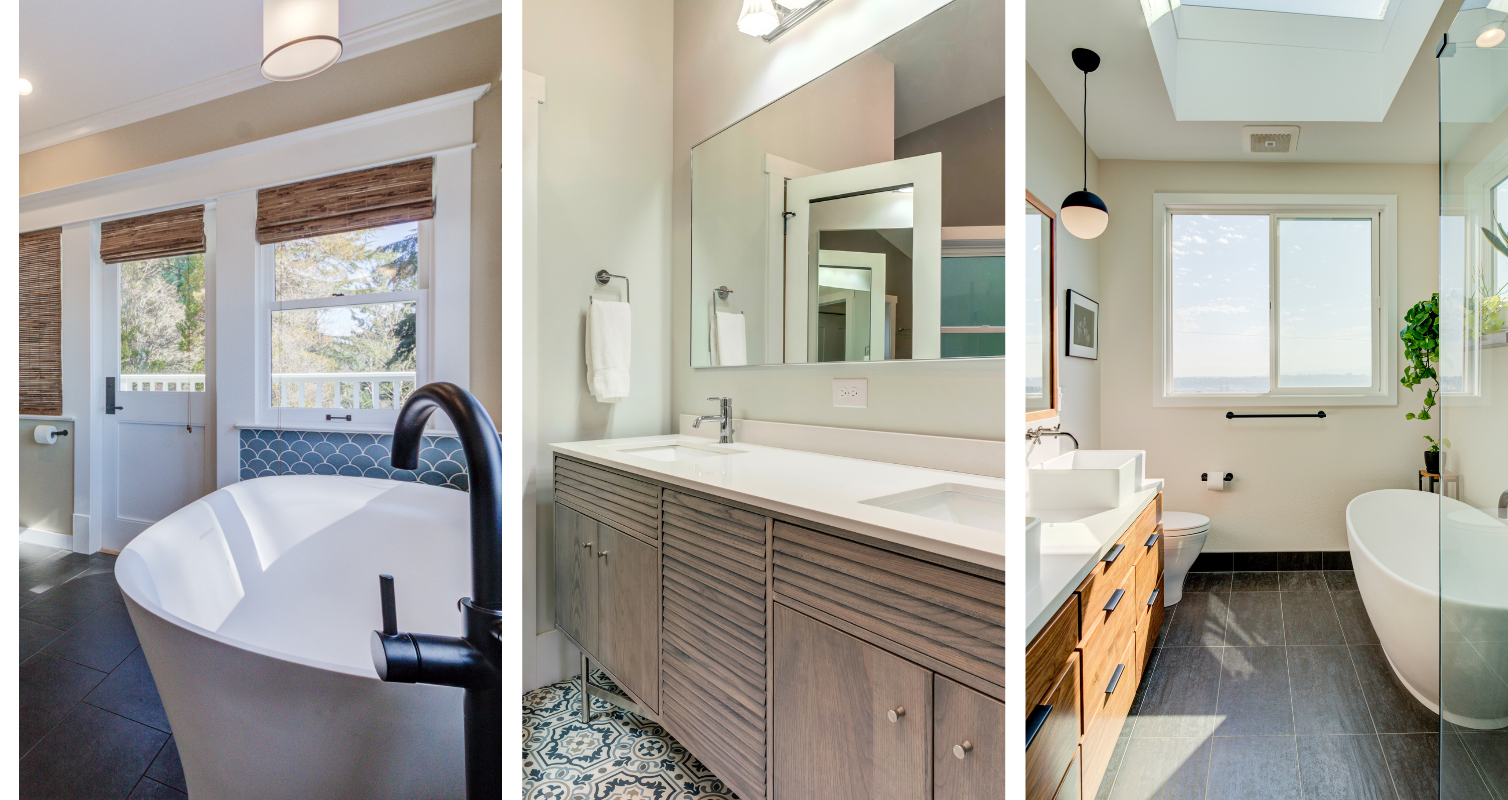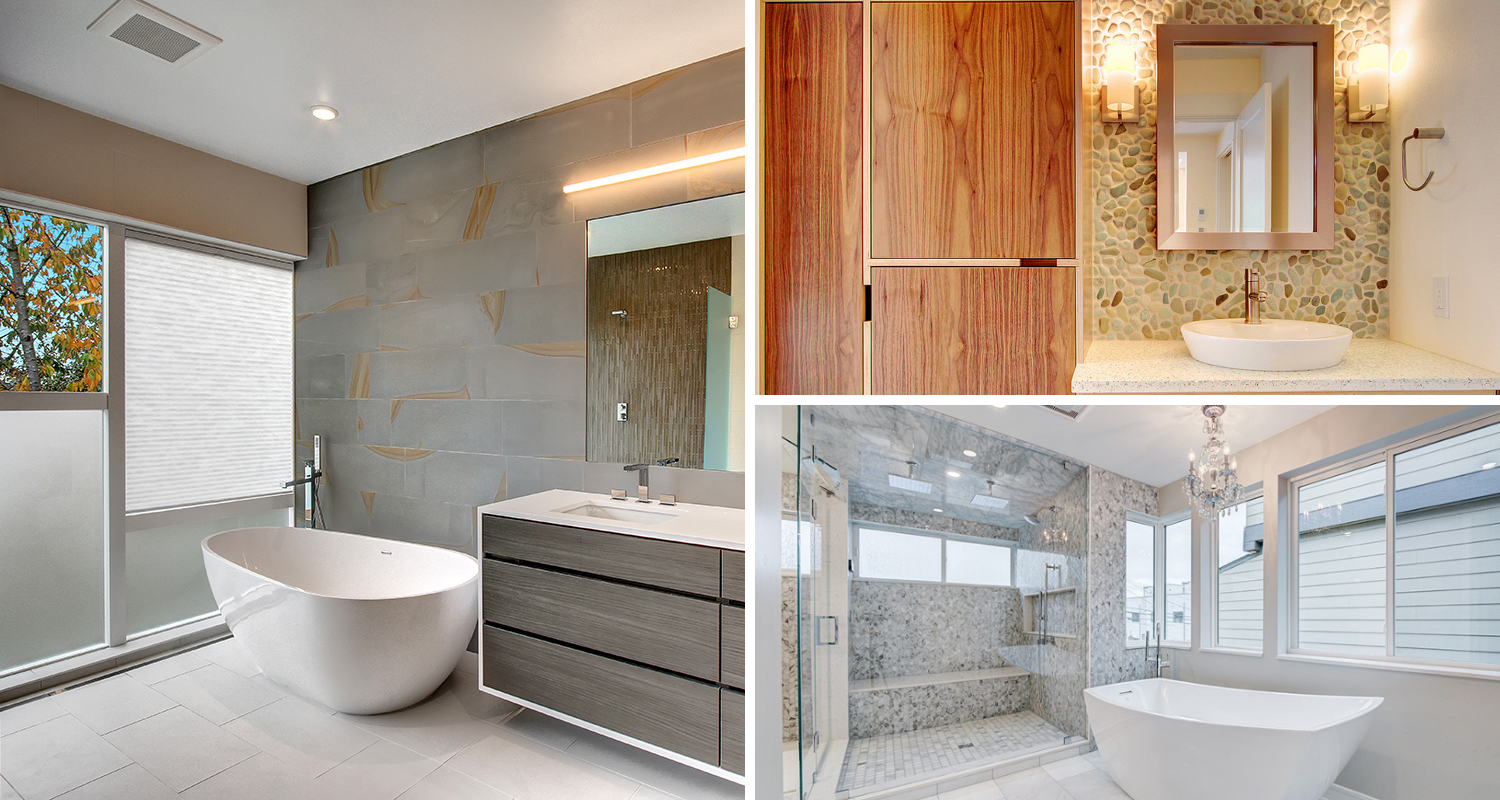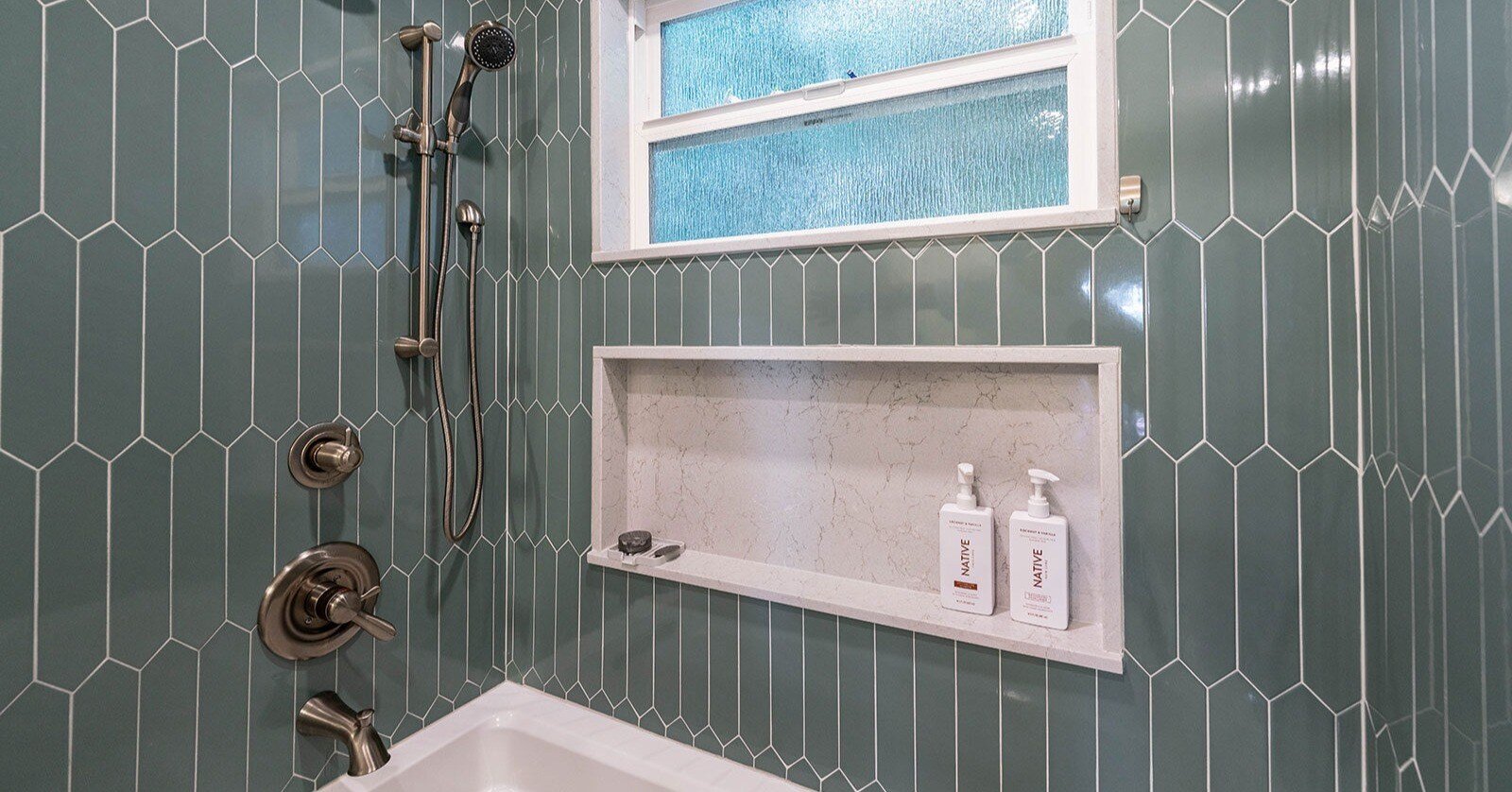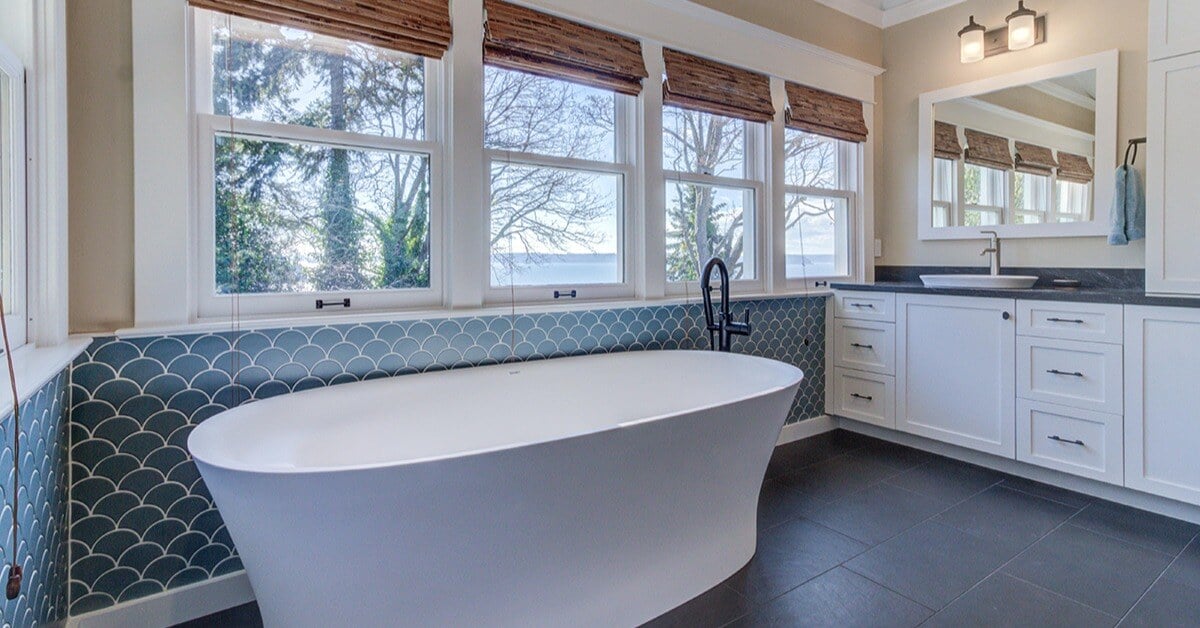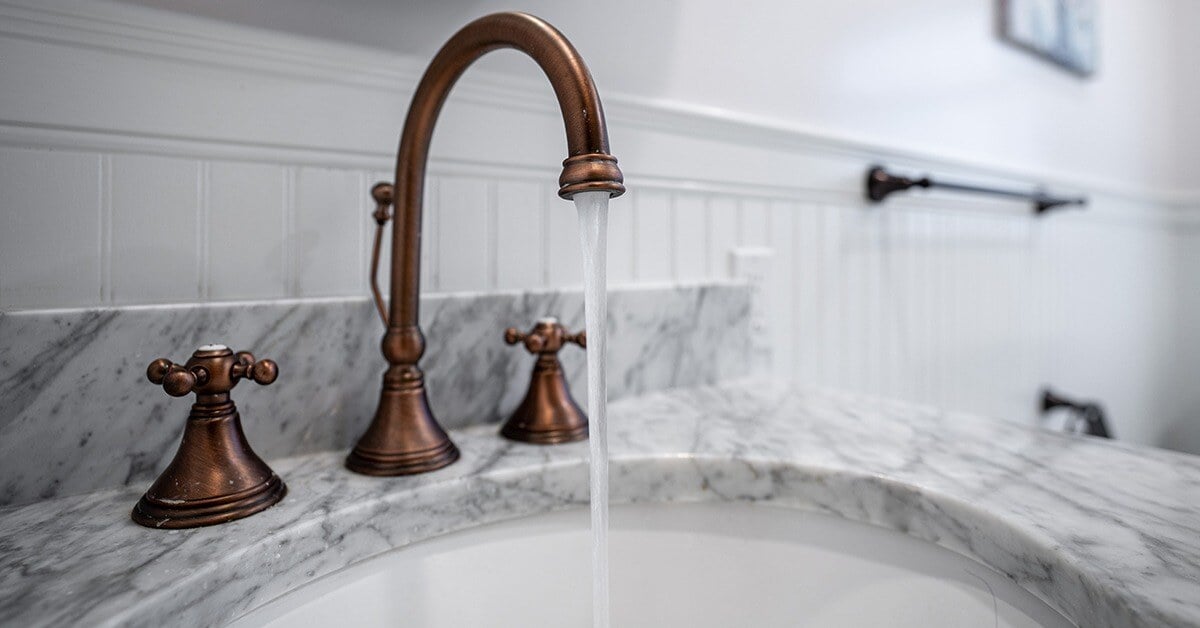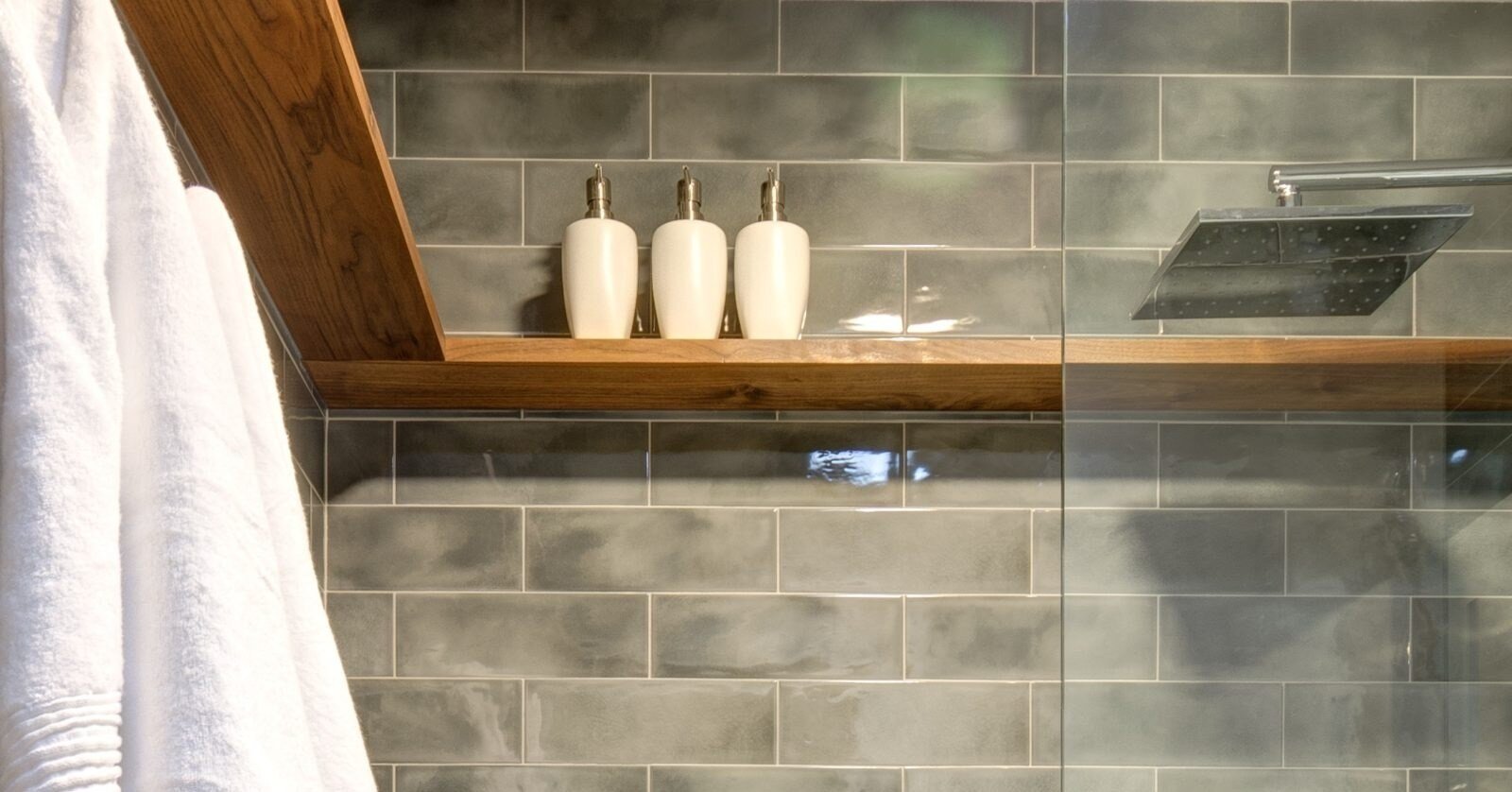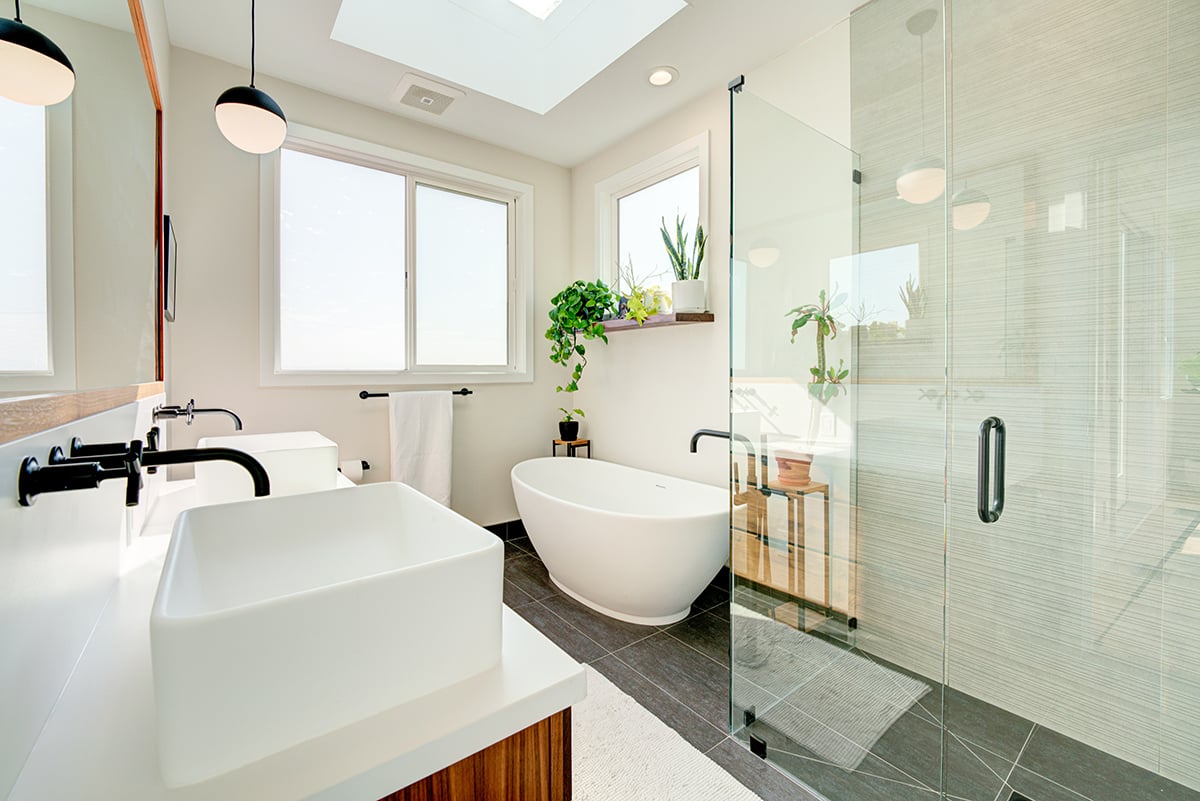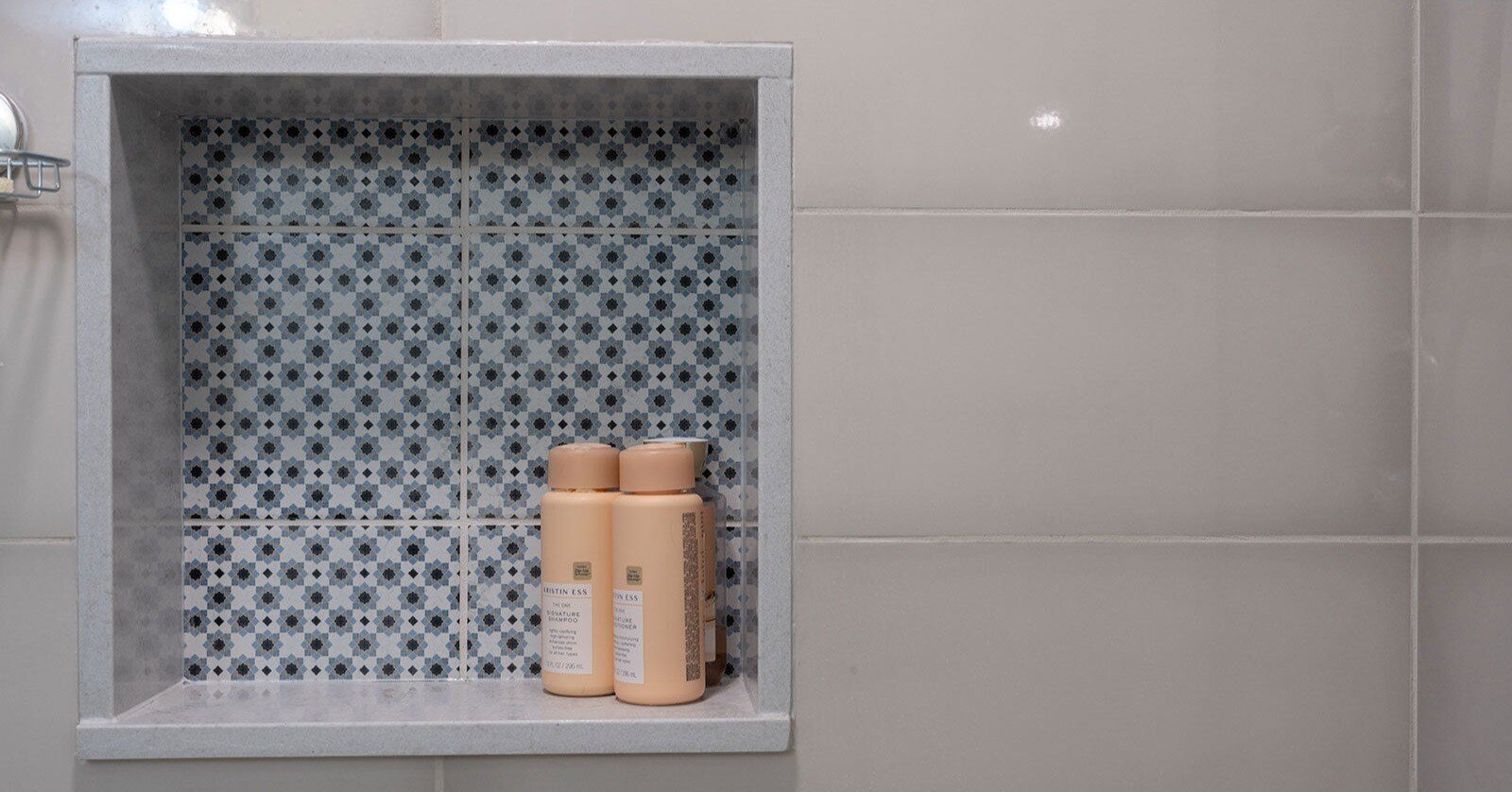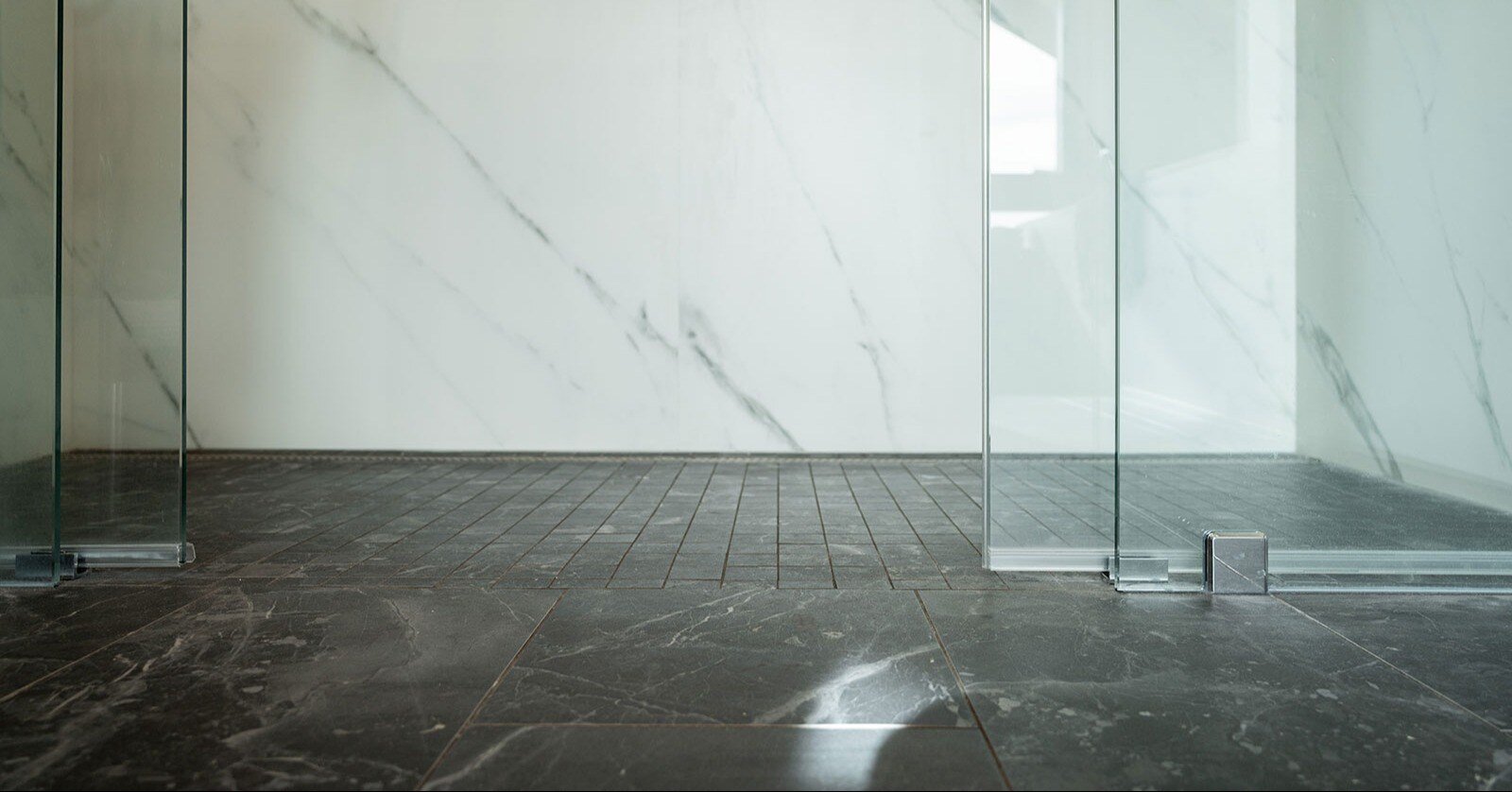Growing up, my sister and I shared a compact bathroom that, let's say, was cozy. It was a tight fit with two sinks, a full-length mirror, and a pocket door separating the shower and toilet. Yet, we managed to make it work, juggling our morning routines while maintaining a sense of privacy. This experience taught me the importance of well-designed and efficient interior design.
Many families encounter the challenge of limited bathrooms and a growing household. In this blog post, we'll explore practical solutions to create a family bathroom that prioritizes both privacy and efficiency, even in constrained spaces.
Establishing Priorities in Family Bathroom Design
Whether you're starting from scratch in a new home that needs to be updated or looking to remodel your current living space, the first step in any renovation is to determine your family’s specific needs and priorities.
A few key questions to ask yourself include:
- What do you value most: more storage, privacy, or simply more space?
- Are you willing to adjust space within your home's existing structure, or does this project require a home addition?

Maximizing Current Bathroom Space
A small bathroom doesn't have to be cramped and inconvenient. With careful planning and the right design-build partners, you can transform it into a functional, private, family-friendly bathroom sanctuary. Maximizing the existing square footage can create the ideal family bathroom. However, this often requires a strategic approach, similar to rearranging a complex puzzle.
Here are a few ways to create the bathroom space you need without adding on to the home:
1. Divide For Multi-Use
Dividing the space is one of the most effective ways to ensure privacy in a shared family bathroom. Creating a bathroom layout with separate zones for the vanity, toilet, and shower allows multiple people to use the bathroom simultaneously without invading each other’s privacy.
For example, you can install a pocket door between the vanity area and the toilet or shower. This way, one person can brush their teeth while another uses the shower or toilet. Even in a small space, clever use of dividers can improve privacy and functionality.
2. Optimize Layout
Sometimes, a bathroom remodel requires a simple rearrangement. Even modest renovations, like repositioning fixtures or switching to a more compact shower, can drastically improve usability.
For example, if your bathroom has an old tub that takes up too much space and isn’t used regularly, you might replace it with a custom-sized shower that can be built to be smaller and maximize space compared to traditional prefabricated shower enclosure and bathtub units, which often require more room. Installing a custom-sized shower will help you gain room for additional storage or a partition wall. Consider opting for glass partitions around the shower instead of fully framed walls, which take up significant space.
For instance, a Ballard area home needed to use the space more efficiently, so we installed a beautiful copper sink set into a right-sized vanity with plenty of room for a large shower with old-world charm.
3. Find Adjacent Space
If the current bathroom is simply too small, look for additional space around it. You might find an underutilized closet or adjacent bedroom that can be used to make the bathroom larger. Or, if your home has a large primary bedroom, it might be worth converting some of that space into a private ensuite bathroom to alleviate pressure on a shared bathroom space that all family members must compete for.
A standard bathroom with a double vanity measures around 5 x 9 feet. By borrowing adjacent space, you can expand the family bathroom to make it easier for multiple people to use at once.
Finding space to enlarge the bathroom will be very specific to each home’s layout and mechanical systems. When you work with an experienced design-build team, they can use 3D schematic drawings to move elements around and help you visualize how everything will fit together.
4. Adding More Bathrooms
If creating a larger main bathroom isn’t feasible, adding a half-bath somewhere else in the home can provide significant relief. A simple powder room can include a toilet and a small vanity, which can be invaluable during busy mornings. Although it doesn’t solve all the challenges, it takes the pressure off the main bathroom, offering extra convenience.
A common solution is repurposing space for a half-bath, such as under the stairs or using a large closet. Basements or laundry rooms can also be converted into small bathrooms if the space allows.
Building an Addition That Includes a New Bathroom
If the above family bathroom ideas aren’t feasible for your home’s current square footage and layout and your budget and local ordinances allow, consider an addition to accommodate a new family bathroom. This is helpful if a bathroom is part of a larger renovation project. You might build an addition for a primary suite with a full ensuite bath and a renovation and expansion of the existing family bathroom.
Instead of simply adding another bathroom to the existing floor plan, consider expanding your living space overall. This will give you more flexibility to design the space that best suits your needs. For example, you could add additional square footage to the primary bedroom to make room for a primary suite or add onto a child's bedroom to make room for a larger shared family bathroom.
An experienced design-build firm can help you envision your entire home's potential, not just a single room. They'll guide you in creating a space that accommodates everyone's needs, including ample bathroom space for multiple users of a busy family.
Custom Solutions for Maximum Efficiency
Customization can make all the difference in a shared family bathroom. Opting for custom-built showers or bathtubs and selecting storage solutions that meet your specific needs will maximize efficiency. For instance, adding a double vanity might make sense if two people need the space simultaneously, but a single vanity with clever storage might be more practical for tighter spaces.
For households with teenagers or young children, adding extra storage space for toiletries, bath toys, and personal items keeps the space organized and reduces clutter, making the space feel larger.
Whatever size bathroom you design, here are a few space-saving tips for bathroom renovation that do not sacrifice style in the process:
- Incorporate a built-in step in your shower to provide a convenient footrest for shaving and eliminate the need for a separate stool.
- You can save space in your shower by opting for a custom-built niche for toiletry storage instead of bulky, after-market organizers.
- Design a built-in seating bench inside your shower, or install a hinged bench that folds away when not in use.
- Pick wall-mounted vanity fixtures to have more space on a small countertop.
- Install space-saving wall-hung toilets with hidden tanks and wall-mounted sink faucets.
- Choose custom-made cabinetry for the bathroom vanity to maximize every inch of your space for ample bathroom storage.
- Utilize your bathroom's vertical space by installing shelves for extra storage.
Gain A Fresh Perspective
As the saying goes, "It’s hard to see the forest for the trees." Homeowners often get caught up in the familiar layout of their space, unable to envision what could be. A professional, on the other hand, approaches the home as a blank canvas—seeing the potential in the square footage without the restrictions of existing walls, closets, or fixtures. They are trained to reimagine the layout, often finding more budget-friendly solutions than simply adjusting or adding to the current floor plan.
What might seem daunting to a homeowner—such as moving walls or rerouting plumbing—is second nature to a professional design-build team. They are used to working with luxury custom homes and finding creative ways to enhance the space without sacrificing function.
Explore how this small bathroom was transformed into a functional and practical space.
Stay Open-Minded to New Ideas
Many homeowners start their bathroom project with a clear vision of how it should unfold. While that initial idea may be a good starting point, it's not uncommon for the final design to look quite different from the original concepts suggested. And that’s often for the best! Professionals bring a fresh perspective, thinking creatively to maximize both function and space in ways you may not have considered.
Being open to new ideas from your design team on how to makeover your family bathroom can lead to innovative solutions that improve its overall efficiency and feel. By trusting the professional process, you can explore new possibilities that will enhance your space far beyond your initial expectations.
Also, keep in mind that a small investment in smart design can pay off in the long run. Spending a little more upfront to reconfigure the bathroom layout or make a structural change can vastly improve how your bathroom functions for your family. That extra cost often brings far greater value and comfort, making it a worthwhile investment for your whole family, lasting for years to come.
On the subject of dreams coming true, did that family with teens sharing a cramped 6 x 8 guest bath get the remodel they were looking for?
Here’s what happened: We took an underused primary bedroom closet with access from the hallway and a pocket door leading into the master bedroom and turned it into a full bath with double sinks and a separate water closet complete with a toilet and shower. The final result is a meticulously crafted, private, and functional communal bathroom designed to accommodate their two teenage daughters.

Find the Balance Between Privacy and Efficiency
Designing a family bathroom is all about finding balance. Whether expanding your current bathroom or creating an entirely new one, privacy and efficiency should guide your decisions. From adding dividers to opting for compact fixtures, there are many ways to maximize space and ensure everyone in the family has a bathroom that works for them.
By considering long-term needs, making thoughtful design decisions, and staying open to creative ideas, you can create a family bathroom that offers both privacy and practicality.
Download the eBook "The Complete Guide to Creating a Dream Bathroom" to learn more about bathroom remodeling, how to effectively assess your needs, optimize space, and make smart renovation decisions.

